
SunTouch WarmWire Installation Guidelines
By SunTouch® A division of Watts Water Technologies, Inc.
WarmWire can be easily sized for any project.
Overview
WarmWire is a simple, economical way to warm your floors, and provide years of lasting comfort.
This instruction manual walks you through the complete process of installing a floor-warming system.
Fasten the cables to the floor, then, depending on your floor coverings, put down a layer of thin-set, thick-set, or self-level mortar on top of the cables.
Finally, install your floor coverings. It’s that simple!
Project Facts:
Time to install:
An average size bathroom should take about 2 hours to install the cables and about 4 hours to install the electrical box, thermostat, and power.
Skill level:
Intermediate skills in electrical wiring and laying floor covering skills. especially if it necessary to route from the circuit breaker panel.
Please be aware that local codes may require this product and/or thermostatic control be installed or connected by electrician
Expected floor temperature:
The floor temperature attainable is dependent on how well the floor is insulated, the temperature of the floor before start up, and in the case of uninsulated slab applications, the thermal drain of the underlying materials.
These are the three most common installation
1. Wood Framing: With the cable installed on a well-insulated wood subfloor, and thin-set mortar and tile on top, most floors can be heated up to 20°F warmer than they would otherwise be.
2. Insulated concrete slab: slab With the cables installed on an insulated concrete slab, and thin-set mortar and tile on top, most floors can be heated up to perhaps 15°F warmer than they would otherwise be.
3. Unisulated concrete slab With the cable installed on an uninsulated concrete slab, and thin-set mortar and tile on top, most floors can be heated up to 10 – 20°F warmer than they would otherwise be.
Please consult a designer or contact us if you have further questions regarding the surface temperature you can expect from SunTouch WarmWire cables in any particular construction. Please see “Phase 9: Install Insulation”.
Phase 1: Design Your System
WarmWire cables should be installed in all interior floor areas that are to be warmed.
It cannot be used for exterior applications, snow melting, or in ceilings warmed.
In some applications, WarmWire can be used to heat the room as well, but in general it is not designed for this purpose (heat-loss calculations momst be made to determine if WarmWire will provide enough heat to match the heat loss).
STEP 1.1
Make a sketch of the room. Measure the total square footage of floor area you wish
to warm (measurements should be made all the way to the edge of walls, cabinets,
tub, etc., for now). Keep in mind the following:
• The cable cannot heat beyond about 2″ on either side of the cable, so consistent coverage is important.
• Permanent bench seats with tile or stone can also contain WarmWire.
• Do not place WarmWire in shower areas.
• You cannot place WarmWire underneath cabinets or fixtures or inside a wall.
• Do not run WarmWire into small closets or other confined areas that may cause excessive heat to build up.
• Do not install the cables closer than 6″ from toilet rings to avoid possible melting of wax rings.
• In open areas, like sunrooms or dining rooms, consider installing WarmWire 6″ to 12″ around the perimeter of the room, since you rarely stand this close to walls.
STEP 1.2
Select the cable spacing.
• 2″ spacing: Sunroom floors, basement slabs, and baths with exterior walls.
(NOTE Insulation is always recommended due to high heat losses in these area.
Performance is never guaranteed due to construction and climate differences these applications.)
2.5″ spacing is achieved by alternating 2″ and 3″ spacing.
Typical Uses
• 2.5″ spacing: Bathrooms, Kitchens, Living area and basments.
• 3″ spacing: Hallways, entryways, and large areas with low heat loss.
STEP 1.3
Multiply the square footage you measured in Step 1.1 by 0.90 to allow for 3″ spacing around the edges of the floor area.
Use this resulting square footage to select the appropriate cable from the
WarmWire selection tables (in this section).
STEP 1.4
Remember:
• Do not place over 15 amps at 120V (1800 Watts) or 15 amps (3600 Watts) at 240V through a Sunstat thermostat control.
• You can select either 120V or 240V depending on the power available to you. DO NOT mix voltages on the same system if more than one cable is to be cover an area.
• Load more than 12 amps (1140 Watts) on a 15 amp circuit breaker, or 16 amps (1920 Watts) on a 20 amp circuit breaker.
If you have an area that requires more than 15 amps of cables to be controlled by one thermostat, use SunStat Relay(s) to take the additional amp load.
If the exact size of cable calculated is not found in the WarmWire Spools tables (next page), it may necessary to adjust the warming area(s) or select the next smaller spool size.
Remember, the cable must never be cut to fit, and must be embedded completely in mortar in the floor. Be careful not to select a spool that is too large.
STEP 1.5
Select enough WarmWire Strap (Order No. 840213080518) to secure the cable to the floor.
A box contains 25 ft. of Strap, enough to prepare about 50 sq. ft. of floor at 4-ft. spacing. Straps are usually spaced 3–4 ft. o.c.
Evaluate how many square feet of floor warming you wish to do.
Do not put under
cabinets or appliances.
Leave the wire at least 4″ away from the toilet wax ring and 2″–3″ away from your walls.
Do install up to the toe-kick in front of kitchen or bath cabinets so your toes stay warm.
|
Data & Coverage Area 120 Volt
|
|
Model No.
|
Sq.Ft @ 2″ O.C.
|
Sq.Ft @ 2.5″ O.C.
|
Sq.Ft @ 3″ O.C.
|
Wire Length Ft.
|
Amperage Draw
|
Resistance (ohms)
|
|
81004574
|
8
|
10
|
12
|
47
|
1.0
|
108-132
|
|
81004575
|
12
|
15
|
18
|
71
|
1.5
|
72-88
|
|
81004576
|
16
|
20
|
24
|
94
|
2.0
|
52-64
|
|
81004577
|
20
|
25
|
30
|
118
|
2.5
|
41-51
|
|
81004578
|
24
|
30
|
36
|
141
|
3.0
|
33-40
|
|
81004579
|
28
|
35
|
42
|
165
|
3.5
|
28-34
|
|
81004580
|
32
|
40
|
48
|
188
|
4.0
|
24-30
|
|
81004581
|
36
|
45
|
54
|
212
|
4.5
|
22-27
|
|
81004582
|
40
|
50
|
60
|
235
|
5.0
|
19-24
|
|
81004583
|
48
|
60
|
72
|
282
|
6.0
|
16-20
|
|
81004584
|
56
|
70
|
84
|
329
|
7.0
|
14-17
|
|
81004585
|
64
|
80
|
96
|
376
|
8.0
|
12-15
|
|
81004686
|
72
|
90
|
108
|
423
|
9.0
|
11-13
|
|
81004687
|
80
|
100
|
120
|
470
|
10.0
|
9-12
|
• 2″ o.c. delivers 15 Watts per sq.ft. — Concrete basement slabs, sunrooms, high heat loss areas, etc.
• 2.5″ o.c. delivers 12 Watts per sq.ft. – Bathrooms, kitchens, dining/living areas, etc.
• 3″ o.c. delivers 10 Watts per sq.ft. – Hallways, entries, low heat loss areas, etc.
|
Data & Coverage Area 240 Volt
|
|
Model No.
|
Sq.Ft @ 2″ O.C.
|
Sq.Ft @ 2.5″ O.C.
|
Sq.Ft @ 3″ O.C.
|
Wire Length Ft.
|
Amperage Draw
|
Resistance (ohms)
|
|
81004588
|
16
|
20
|
24
|
94
|
1.0
|
217-265
|
|
81004589
|
24
|
30
|
36
|
142
|
1.5
|
144-176
|
|
81004590
|
32
|
40
|
48
|
188
|
2.0
|
105-128
|
|
81004591
|
40
|
50
|
60
|
236
|
2.5
|
83-102
|
|
81004592
|
48
|
60
|
72
|
282
|
3.0
|
66-81
|
|
81004593
|
56
|
70
|
84
|
330
|
3.5
|
57-69
|
|
81004594
|
64
|
80
|
96
|
376
|
4.0
|
49-61
|
|
81004595
|
72
|
90
|
108
|
424
|
4.5
|
44-54
|
|
81004596
|
80
|
100
|
120
|
470
|
5.0
|
39-48
|
|
81004597
|
96
|
120
|
144
|
564
|
6.0
|
33-40
|
|
81004598
|
112
|
140
|
168
|
658
|
7.0
|
28-34
|
|
81004599
|
128
|
160
|
192
|
752
|
8.0
|
24-30
|
|
81004601
|
144
|
180
|
216
|
846
|
9.0
|
22-27
|
|
81004602
|
160
|
200
|
240
|
940
|
10.0
|
19-24
|
Phase 2: Preparation
Some Cautions:
As with any electrical product, care should be taken to guard against the potential risks of fire and electric shock and injury to persons.
The following Cautions must be observed:
NEVER cut the heating cable. However, the 10′ power lead can be cut shorter if needed.
NEVER bang a trowel or other tool on the cable. Be careful not to nick, cut, or pinch the cable causing it to be damaged.
NEVER Install the cables under cabinets or other built-ins. Excessive heat will build up under these items and cause damage.
NEVER Install the cable in any walls, over walls or partitions that extend to the ceiling, or closets.
NEVER extend the heating portion of the cable beyond the room or area in whichit originates.
NEVER attempt to repair a damaged cable. Contact the factory for assistance.
NEVER overlap heating cables. Dangerous overheating can occur.
NEVER allow a power lead or sensor wire to across a heating cable as this could cause damage.
NEVER embed the cables in adhesives intended for laminate or vinyl flooring. It must be completely embedded in cement based mortar.
NEVER combine systems of different voltages. Damage can result.
NEVER use 1″ spacing.
ALWAYS maintain a minimum of 2″ spacing between cables.
ALWAYS use copper only as supply conductors to the control and WarmWire. Do not use aluminum
ALWAYS test the cable resistances and record them in the log in this manual.
ALWAYS pay close attention to voltage and amperage requirements of the circuit breaker, control, and cable system. for instate, do not supply 240 VAC to 120 VAC controls and cables.
ALWAYS make sure all electrical work is done in accordance with local building codes, the National Electrical Code (NEC), especially Article 424, Part IX, and Section 62 of the Canadian Electrical Code (CEC) Part I.
Some Tips:
Trowel. Use plastic trowel to reduce the possibility of cable damge.
Insulation. The better insulation you provide, the more efficiently the system operates to better heat your flooring. Concrete slab surfaces offer the most thermal drain and should be insulated underneath if at all possible
Controls. The SunStat floor-sensing thermostat will provide direct floor warming control for better comfort.
floor-sensing thermostat will provide direct floor warming control for better comfort.
Other controls may not give the level of control you desire.
Always select controls that will meet the voltage and amp ratings of the system and are designed for resistance heating systems.
SunStat Pro Control – Programmable Model 500670
The Programmable FloorStat is both elegant and intelligent.
5/1/1 Day Programming allows for energy saving control.
Four Preset Program Schedules for easy setup.
One User Program Schedule for customized programming.
SmartStart Technology allows for compfort energy saving, too.
Usage Monitor shows the hours of system operation.
SunStat Control Non-Programmable Model 500675.
Nonprogrammable SunrStat are recommended For a smaller Spot Warming mats.
This device uses a floor sensor to maintain the precise temperature you select for your tile.
SunStat Relay Slave Unit Model 500680
Mortars. Self-leveling mortars are becoming more popular to use because of their ease of application over the cables.
If you are applying tiles, you will need to apply another layer of thin-set to lay the tiles.
Always use polymer-modified cement-based mortar.
Do not use solvent-based adhesives or pre-mixed because they are not as heat resistant.
Controls. The SunStat floor-sensing thermostat will provide direct floor warming control for better comfort.
floor-sensing thermostat will provide direct floor warming control for better comfort.
Other controls may not give the level of control you desire.
Always select controls that will meet the voltage and amp ratings of the system and are designed for resistance heating systems.
SunStat Pro Control – Programmable Model 500670
The Programmable SunStat is both elegant and intelligent.
5/1/1 Day Programming allows for energy saving control.
Four Preset Program Schedules for easy setup.
One User Program Schedule for customized programming.
SmartStart Technology allows for compfort energy saving, too.
Usage Monitor shows the hours of system operation.
SunStat Control Non-Programmable Model 500675.
Nonprogrammable SunrStat are recommended For a smaller Spot Warming mats.
This device uses a floor sensor to maintain the precise temperature you select for your tile.
SunStat Relay Slave Unit Model 500680
Items Needed:
• SunTouch WarmWire System
• SunTouch WarmWire Strap
• Thermostat control with floor sensor (SunStat)
• 20-amp circuit breaker (single for 120V and dual for 240V systems)
• Electrical box (extra deep) for thermostat; single-gang (not a gangable type) or 4″-square deep box with a single-gang “mud ring” cover
• 4″ junction box with a cover, if needed
• Cable clamps for junction box (for new construction)
• Flexible or rigid conduit (for new construction)
• 12-gauge or 14-gauge electrical wiring cable (consult your local code)
• Wire nuts if using a junction box
• Nail plate
Tools:
• Digital multi-meter (for ohms testing; must read up to 20 kohm to measure sensor)
• Drill with 1/2″ bit
• Hammer and chisel
• Wire strippers
• Phillips screwdriver
• Fish tape (for existing construction)
• Hole saw (for existing construction)
Floor covering installation tools:
• Book or video on Electrical Wiring Techniques
• Book or video on Floor Covering
• Installation Technique
Phase 3: Inspect the Cable and Sensor
STEP 3.1
Take the WarmWire cable out of the box and look it over to make sure there is no visible damage. There are shielded leads coming out of the spool of cable called the “power leads” (they are simply power supply cables that do not heat).
The power leads are approximately 10 feet long and will connect the “heating” cable to the control for power.
STEP 3.2
Record the product information. There is a factory-applied nameplate label on the power leads. Do not remove this label. Record the cable serial number, model number, voltage, and cable resistance range in the Cable and Sensor Resistance Log (see next page). If you installing more than one WarmWire cable, do this for each one of them.
IMPORTANT:
To retain the Limited Warranty, the following measurements must be recorded, and all steps of this manual followed. Refer to the Limited Warranty now for complete requirements (see our Warranty page).
STEP 3.3
Take resistance readings of the cable to make sure it is not damaged.
This is very important to do throughout the installation process Use a quality digital ohm meter or multimeter to make these measurements.
Analog meters (with the moving needle) are not accurate for this product and shouldn’t be used.
Take resistance readings (1) before you begin installation, (2) after the cable is fastened to the floor, and (3) after floor coverings are installed. Checking these measurements frequently during tile installation is highly recommended to avoid burying a damaged wire.
Checking for Breaks
Measure resistance between the black and white leads (black and blue leads for 240V cables) and record this in the chart below. This measurement should be within the Cable Resistance range shown on the nameplate label. A cut or break in the wire is indicated by a resistance of “infinite” ohms (no continuity).
Checking for Short-Circuits
Measure resistance between the black and green leads and between the white and green leads (blue and green leads for 240V cables) and record this in the chart below.
These measurements should be within the cable resistance range shown on the name plate label. Measure between the lead wires of the floor sensor.
This resistance varies according to the temperature sensed in the tip.
The sensor resistance table at left provides approximate values for comparison.
A cut or break in the wire is indicated by a resistance “infinite” ohms (no continuity).
Cable and Sensor Resistance Log
|
Cable 1
|
Cable 2
|
Cable 3
|
|
| Cable Serial Number | |||
| Cable Model | |||
| Cable Voltage | |||
| Cable Resistance Range |
OUT OF THE BOX BEFORE INSTALLATION (ohms)
| Cable black to white | |||
| Cable black to green | |||
| Cable white to green | |||
|
Sensor wire |
AFTER CABLE AND SENSOR ARE FASTENED TO THE FLOOR (ohms)
| Cable black to white | |||
| Cable black to green | |||
| Cable white to green | |||
|
Sensor wire |
AFTER FLOOR COVERING ARE INSTALLED (ohms)
| Cable black to white | |||
| Cable black to green | |||
| Cable white to green | |||
| Sensor wire |
Floor Sensor Resistance Values
|
Temperature
|
Typical Values
|
|
55°F (13°C)
|
17,000 ohms
|
|
65°F (18°C)
|
13,000 ohms
|
|
75°F (24°C)
|
10,000 ohms
|
|
85°F (29°C)
|
8,000 ohms
|
Phase 4: Electric Rough-In
Refer to the “Control Wiring Diagrams” section at the end of this manual for
wiring diagrams of different voltages and applications.
New Construction
(for Existing Construction see below)
OVERVIEW
We recommend the WarmWire system be installed on a dedicated circuit coming directly from your circuit breaker panel. Follow all National Electric Code (NEC) and other local electrical code requirements when installing this system. Work should be done with great care and with the power turned off to the circuit being worked on.
STEP 4.1
Install a maximum 20 amp circuit breaker(s) into the breaker panel, depending on the load of the WarmWire system.
Use a 120V single-pole breaker for a 120V system.
Use a 240V double-pole breaker for a 240V system.
Use a GFCI (Ground Fault Circuit Interrupter) type if you are not using a SunTouch SunStat control which always includes a GFCI.
For systems that are too large to directly power through one SunStat but must be operated by one floor-sensing, use a SunStat control in combination with up to 10 SunStat Relay Controls.
Contact us for more information
STEP 4.2
Install an electrical box for the SunStat control. If installing one to two WarmWire cables, use an extra-deep single-gang box to allow plenty of room to work with the wiring.
Use a 4″-square box if installing three WarmWire cables. The can be located almost anywhere that is ventilated.
However, the best place is in the same room as the WarmWire, typically about 60″ above the floor, and within reach of the power lead wires of the cable.
If installing more than three WarmWire cables, it will be necessary to connect their power leads in a junction box first (see step 4.4) to keep from overfilling the control electrical box.
Then route one power supply from this junction box to the control box.
STEP 4.3
Following code, feed 14-gauge or 12-gauge NM type electrical wiring from the circuit breaker panel to the control electrical box.
Leave approximately 6″ to 8″ of extra wire extended from the box to work with.
STEP 4.4
If the control box must be mounted in a location that is too far to reach with the power lead wires, it will be necessary to mount a junction box where the lead wires can be terminated.
Use a standard junction box with a cover, mounting it below the floor, in the attic, or in another easily accessible location. It must remain easily accessible and not located behind a wall, cabinet or similar obstruction.
Then use 14-gauge or 12-gauge NM type or other accepted electrical wiring to connect from the junction box to the control box.
STEP 4.5
Drill two 1/2″ holes in the baseplate directly below the control electrical box.
Then, as close to the floor surface as possible, drill two horizontal holes, intersecting the top holes
STEP 4.6
If conduit is required by your local electrical code, cut a length of 1/2″ to 3/4″ electrical conduit to run from the control box down to the baseplate.
At the baseplate you may be necessary to chisel out more of the wood to make it easier to feed the wires up through the conduit.
STEP 4.7
Mark the circuit breaker in your panel which feeds the system with “SunTouch floor warming / bath” or similar description.
Existing Construction
OVERVIEW: It is recommend that the WarmWire system be installed on a separate, dedicated, circuit coming directly from the breaker panel.
In existing construction, however, it may be difficult to do this depending on the location of wiring and the breaker panel. Tapping off an existing circuit may be possible, but only if there is enough load capacity to handle both the system and any additional loads that may be placed on the circuit.
Keep in mind that typical hair dryers can pull up to 10 amps (1200 watts) of load.
Follow all NEC and other local electrical code requirements when installing this system. Work should be done with great care and with the power turned off to the circuit being worked on.
STEP 4.8
Install a maximum 20 amp circuit breaker(s) into the breaker panel depending on the load of the system.
Use a 120-VAC single-pole breaker for a 120V system.
Use a 240V double-pole breaker for a 240V system.
Use a GFCI (Ground Fault Circuit Interrupter) type if not using one of our SunStat controls which have a build-in GFCI.
STEP 4.9
Cut an opening in the wall for the control electrical box.
If installing one to two WarmWire cables, use an extra-deep single-gang box to allow plenty of room for the wiring.
Use a 4″-square box if installing three WarmWire cables.
The box can be located almost anywhere that is well ventilated.
However, the best place is in the same room as the WarmWire cable, typically about 60″ above the floor, and within reach of the power lead wires of the cable.
If you have more than three cable, it will be necessary to connect their power leads in a junction box first (see step 4.11) to keep from overfilling the control box
STEP 4.10
Following code, feed 14-gauge or 12-gauge NM type electrical wiring from the circuit breaker panel to the control electrical box opening.
Leave approximately 6″ to 8″ of extra wire extended from the opening
STEP 4.11
If the control box must be mounted in a location that is too far to reach with the power lead wires, it will also be necessary to mount a junction box where the lead wires can terminate.
Use a standard junction box with cover, mounting it below the floor, in the attic, or in another easily accessible location. It must remain easily accessible and not located behind a cabinet or similar obstruction).
Then use 14- or 12-gauge NM type or other accepted electrical wiring to connect from the junction box to the control electrical box.
STEP 4.12
At the floor level below the control box, cut out a 2″ x 2″ wide piece of the
wall surface.
Use a wood chisel to notch out a channel in the base plate to make it easier to route the wires up the wall.
STEP 4.13
Mark the circuit breaker in your panel which feeds the system with
”
SunTouch floor warming/bath” or similar.
Phase 5: Installing the WarmWire Cables
Getting Started
STEP 5.1
Important! Refer to Phase 8 and Appendix 1 to make sure the floor is properly prepared for installation of the cable(s), especially the use of reinforcement, leveling, and insulation on concrete slab.
Use the sketch and design considerations made earlier in the Phase 1 “Designing your system” section to begin laying the WarmWire cable.
Do not install the cables closer than about 4″ to 6″ from wax toilet rings and plumbing to keep from overheating these items.
STEP 5.2
Make sure to space the cables to provide the warmth you want. DO NOT space them at 1″ apart becouse this will cause a very hot area and may damage the system.
Before installing the cables, make certain the proper cable length and voltage has been selected for the square footage to be heated.
STEP 5.3
If this is new construction, draw lines on the floor or use templates to outline the area of any cabinets, fixtures, or future walls that will be placed in the room. NEVER install the cables under cabinets, fixtures, or walls. Excess heat may build up under these items and cause damage.
STEP 5.4
Decide which direction the cable will run on the floor for the easiest coverage.
Refer to the sample layouts in this manual for assistance.
Depending on the shape of the area, it may help to think of it in terms of several smaller areas. Never cross the cables over each other or cut them shorter. Damage may result and may cause dangerous problems.
Extra forethought at this stage of installation will make the rest of the job much easier.
.
GENERAL INSTALLATION:
STEP 5.5
Begin by measuring about 3″ from the wall to place the WarmWire Strap. If your design called for 6″–12″ away from the wall, install the strap at that distance
STEP 5.6
Cut the WarmWire Strap to fit the length of the first area.
STEP 5.7
Secure the strap to the floor using double-sided tape ( if factory supplied with your cables), or using a strong spray adhesive (such as 3M Hi=Strength 90 or similar), spray an even coat onto the backside of the strap and the area of floor where it will be placed, allow the adhesive to get tacky (per product instructions), then turn the strap over and firmly press onto the floor.
Follow all manufacture’s instructions when using a spray adhesive.
STEP 5.8
For floor surface other than concrete. Secure the strap to the floor using galvanized nails or screws,
Secure the strap every 6” – 10”
STEP 5.9
for added securement, on concrete floors, use a hammer drill to set holes into the concrete.
Secure the strap every 6″ – 10″.
STEP 5.10
Cut another piece of cable strap for the other end of the area and secure 3″ from the wall(s) or other obstruction(s).
STEP 5.11
Unreel the power leads of the cable up to the factory splice. Let the coil of power leads sit on the floor for now.
Beyond the factory splice is the WarmWire heating cable itself.
STEP 5.12
Before installing more straps, fill in the first section with WarmWire cable.
Begin by making a “strainrelief” at the beginning so the cable is not accidentally pulled loose.
Zigzag the cable under the tabs only as shown in the picture.
Press the tabs down to secure the cable.
STEP 5.13
Weave the cable back and forth across the area at the desired spacing until the other side of the room has been reached. Once you complete this area, press down all the tabs.
Remember, NEVER space the cables less than 2″ apart.
STEP 5.14
If thw are additional areas to cover with cable, cut the lengths of strap necessary, attach them to the floor, and begin weaving the cable into that area.
OTHER INSTALLATIONS:
Because many different room shapes and floor obstructions mat be encountered in any given installation, three additional layouts are provided on the next page to assist you in determining the best way to complete installations in odd-shaped areas.
CORNER SHOWER OR VANITY
STEP 5.15
For an angled area, such as a corner shower, first cut several pieces of WarmWire Strap a little longer than the spacing been use.
STEP 5.16
Use a chalk line or pen to mark the floor at 3″ from the edge of the shower.
STEP 5.17
Use this chalk line to attach each piece of WarmWire Strap to the floor so the cable does not get any closer to the corner shower than 3″.
Make sure that the cables are spaced evenly and parallel one another.
STEP 5.18
Fill in the section with WarmWire.
DOOR ENTRYWAY
STEP 5.19
For an entryway or other small area where warmth is required, begin by cutting two lengths of WarmWire Strap a little shorter than the length of the entry opening. Then secure the two Straps parallel to each other.
STEP 5.20
Fill in with cable, adjusting spacing as necessary to fill in as much of the area as possible
STEP 5.20
Fill in with cable, adjusting spacing as necessary to fill in as much of the area as possible.
STEP 5.21
If covering a bench seat or step area (not in a shower area), place a single run up the riser. Use WarmWire straps to secure the cable to the seat area at the desired spacing, and then install a single run down the riser.
Again, the cable on the riser and seat area MUST be fully embedded in mortar and have approved floor coverings. Use hot glue where necessary to secure the WarmWire against the riser.
FINAL STEPS
STEP 5.22
If you have a second WarmWire cable to install in the area, remember that all power leads must come back to the control, or to a junction box and then to the control.
Do not run the power lead across heating cables, under baseboard areas, or other potentially damaging areas. Never join two WarmWire cbles in series.
STEP 5.23
To secure long lengths of heating cable, place additional, short lengths for a strap at 3-4-ft. Intervals. Spray the back of the strap with high-tack adhesive, and slide the strap, upside down under the cables.
Turn the strap over when it is positioned and adhere to the floor.
Press the tabs down over the cables. If a spray adhesive was not used, carefully secure these short lengths of strap to the floor with out damaging the cable.
STEP 5.24
After the cable installation is completed, inspect the work. Make sure all tabs are pressed down, cable spacing are correct, no cable cross over each other, all the cable are undamaged, and all areas to be heated are covered with cable
STEP 5.25
Take resistance readings of the cable again to make sure it has not been damaged during the installation. This is very important to do.
Record these readings in the Cable Resistance Log shown on this manual.
STEP 5.26 (optional)
With the heating portion of the cable fully installed, it Is recommended that the cable be temporarily connected to the power source and allowed to heat for several minutes.
After the cables begin to feel warm to the touch, disconnect the power.
STEP 5.27
Lay cardboard, carpet, or similar material over the cables to protect them from
damage until the floor covering is installed.
Phase 6: Finish wiring
New Construction
STEP 6.1
Chisel a channel in the floor to lay the power lead splice into.
This will ensure the splice does not create a high-spot in the floor.
The power lead splice MUST BE fully embedded in the mortar bed
STEP 6.2
Feed the power leads from the WarmWire up through the hole drilled in the baseplate,
or up into the conduit to the control electrical box (or junction box if one was
STEP 6.3
Secure the power lead splice into the chiseled channels with hot-glue.
STEP 6.4
Below the control, or wherever the floor sensor is to be located, measure at least 1 ft. into the heated area.
Mark the spot where the sensor will be attached to the floor. Be sure to locate the sensor exactly between two of the heating cables
Tip: consider installing a second sensor in the floor as a backup, just in case the first ever gets damaged.
The second sensor leads are simply not connected to the control, but left unconnected and protected with electrical tape inside the control box.
STEP 6.5
To make sure the sensor tip does not create a high spot in the floor, chisel a channel into the floor and lay the sensor tip into the channel, Then hot glue the tip into place
STEP 6.6
Drill another hole into the baseplate, if needed, to feed the sensor wire up to the control box. Finish by securing a steel nail plate over the wires to protect them against baseboard nails later.
STEP 6.7
If it was necessary to end a power lead at a junction box, feed 14 or 12- gauge electrical wire from this box to the control box.
Tip: If more than one WarmWire cable, label the ends of the power leads with a brief description as to which area they supply power. Use tape to label them “Cable 1”, “Cable 2”, or “Kitchen”, “Bath” or similar. This will make it easier to identify the leads later on.
Existing Construction
STEP 6.8
Use a fish tape to pull the power leads up the wall to the control electricalbox (or junction box if one was used).
STEP 6.9
Chisel a channel in the floor to lay the power lead splice into.
This will ensure the splice does not create a high-spot in the floor.
Hot glue into place (see pictures 6.1)
STEP 6.10
Below the control location, or wherever the sensor is to be located, measure at least 1 ft. into the heated area. Mark the spot where the sensor will be attached to the floor. Be sure to located the sensor exactly between two of the heating cables (see photo 6.4).
to make sure the sensor tip does not create a high spot in the floor, chisel a channel into the floor and lay the sensor tip into the channel. Hot glue the tip into place (see photo 6.5)
Tip consider installing
Tip: consider installing a second sensor in the floor as a backup, just in case the first sensor ever gets damaged. The second sensor leads are simply not connected to the thermostat, but left unconnected and protected with electrical tape inside the thermostat box.
STEP 6.11
Use a fish tape to pull the sensor up the wall to the control electrical box, and finish by securing a steel nail plate over the power leads and sensor wires to protect them against baseboard nails later.
STEP 6.12
If it was necessary to end a power lead at a junction box, feed 14- or 12-gauge electrical wire from this box to the control box.
Tip: If more than one WarmWire cable was installed, label the power leads with a brief description as to which area the supply power. Use tape and label them “Cable 1”, “Cable 2”, or “Kitchen”, “Bath” or similar. It will help keep from mixing them up.
Phase 7: Install the Control
STEP 7.1
Read and follow the instructions that come with the SunStat thermostat control.
STEP 7.2
Refer to the Control Wiring Diagrams at the end of this manual for different voltages and applications.
STEP 7.3
Install the electrical box for the control, if this has not already been done.
Connect the power leads from the WarmWire cable (or the electrical wiring coming from junction boxes) to the “LOAD” side of the thermostat control.
Connect the incoming power to the “LINE” side of the thermostat control. Connect the sensor wires to the sensor terminals on the control. Connect the ground leads from the system to the ground wire from the incoming power.
STEP 7.4
Install the the control into its electrical box and turn the circuit breaker on to power this system. Test the system and control for several cycles.
It should allow the heating cables to heat up correctly.
Note: Consider placing a loose tile
over the sensor tip to simulate warming the floor and allow the sensor to register this
on the control
STEP 7.5
Apply thermostat operation stickers (included with most controls) to the inside of the thermostat door or cover plate as recommended.
Leave instruction sheets with the homeowner.
Retain all instruction sheets and warranties.
Phase 8: Install the Floor Covering
STEP 8.1 Final Inspection
The floor must be completely swept of all debris including all nails, dirt, wood, and
other construction debris. Make absolutely sure there are no objects on the floor that
might damage the SunTouch wire.
Make final inspection of the installation. Inspect the installation very carefully for evidence of damage or missing sensor(s)
STEP 8.2 Select Type of Construction
Choose the best thin-set, thick-set, or self-leveling mortar method for your application.
Consult with building professionals and/or flooringsupplyshop.com personnel for help.
STEP 8.3 Take another resistance reading!
After floor coverings have been installed. Take resistance reading of the cable again to make sure it has not been inadvertently damaged. This is very important to do.
Record these reading in the Cable and Sensor Resistance Log
.
WARNING: Do not cut the wire or shorten the mat to make it fit the space.
Doing so will cause dangerous overheating and will void the warranty!
STEP 8.4 Install the Floor
Special Precautions
Isolation Membrane: If a crack isolation membrane or cork underlayment is being used, install the WarmWire above the membrane, unless otherwise recommended by the cork or membrane manufacturer. However, if Schuler® Ditra, Blanke Uni-Mat, or similar product is being used, install WarmWire below these products.
Insulation: Do not install rigid insulation directly above or below backer board or mortar.
If possible, install insulation as shown in diagrams. Insulation dramatically enhances the performance and efficiency of floor warming systems.
Mosaic Tile: If installing mosaic tile, we recommend a two-step process. First embed the WarmWire in a thin mortar bed (1/4″–3/8″), then thin-set the mosaic tile according to typical practice.
Expansion Joints: Do not install WarmWire through an expansion joint. Install the wire up to the joint, if necessary, but not through the joint
STEP 8.4 Install the Floor
After floor coverings have been installed, take resistance readings of the cable again to make sure it has not been damaged somehow during your installation.
This is very important to do. Record these readings in the Cable Resistance Log shown earlier in the manual.
Phase 9: Install Insulation
Insulate under the subfloor for better performance and efficiency of the SunTouch WarmWire system.
Phase 10: System Operation
After all WarmWire system components are in place and floor coverings installed, briefly test the operation of the system. But do not put it into full operation until the mortar materials are fully cured (typically one to four weeks). See the mortar manufacturer’s recommendations for the specific type of mortar used
Many manufacturers of laminate and wood flooring recommend a maximum of abut 84F (29C) on the floor surface. Be sure to program the control accordingly.
Consult the manufacturer regarding recommended floor temperatures for the flooring being installed
Energize the system. Operate the controls so that the system turns on the floor-warming cable.
The control will normally indicate that power is applied to the floor-warming cable. It takes some time to warm up. If you have a clamp-type ampmeter (electricians normally carry these) you may pull the thermostat back out of the wall and test to see if the cables are pulling current, thus indicating they are working as intended.
Turn the system back off after NO MORE than 10 minutes of operation, and wait to operate it again after the floor mortar is cured.
Once the flooring is cured, you may operate this system with your controls for many years to come.
– Pick a “spacing factor” (2″, 2.5″, or 3″ on center). Below are guidelines for application and respective spacing recommendations.
***The 2.5″ spacing is most commonly used.
Follow these simple steps in calculating heated area and wire length(s):
1. Calculate the total wall-to-wall area of the room, then subtract built-ins like vanity, tub, toilet, refrigerator, etc. Don’t quote the area behind toilet and stay about 3″ – 4″ from the wax ring.
______ total area
______ built-ins
= ______ sq.ft
2. a) For rooms with built-ins, such as kitchens and baths, multiply the above area by 0.90. This is the heated area.
____x 0.90 = ___ sq.ft.
b) Or for open areas, such as family rooms and sunrooms, take out 6″ – 12″ around the perimeter of the room and calculate the remaining area. This is the heated area.
3. Decide if you need 120 VAC or 240 VAC WarmWire. In general, use 120 VAC for heated areas 150 sq.ft. or less and 240 VAC for areas larger than 150 sq.ft. (It’s okay if you don’t know at this time, because 120 VAC WarmWire is basically the same
cost as 240 VAC.) ___ 120 VAC ___ 240 VAC
4. Decide on 2″, 2.5″, or 3″ o.c. wire spacing (see above guidelines).
5. Look at the WarmWire tables to match the heated area with the desired wire spacing and proper voltage.
Round down to the nearest size; its always best to have too little, than too much.
You can always adjust the spacing in the field to make up the difference.
Remember, you can use multiple cables if your area is larger than the available spool lengths. You can also use multiple cables for smaller areas. For instance, if you are using 2.5″ spacing, and need to heat 60 sq.ft., select one 25-sq.ft. cable and one 35-sq.ft. cable.
Click here for part 2
Click here for SunTouch VIDEO Library
SunTouch vs. Product A – SunTouch vs. Product B
SunTouch Floor Heating Mat Links
SunTouch Mats Spec and installation – SunTouch Mat Specification – Underfloor Spec and Installation
SunTouch Floor Heating Spool Links
SunTouch WarmWire Installation Guidelines – SunTouch WarmWire Strap – WarmWire Installation Guidelines – WarmWire Order Instruction and Information
Heating Controls Links
Programmable SunStat Spec – Owner’s Manual Programmable 500670-SB – Owner Manual Non Programmable 500675
– SunStat Non Programmable Spec – SunStat Relays Control – LoudMouth Operating Instruction
Misc SunTouch Links
SunTouch 25 year Limited Warranty – EMF Electromagnetic fields – Frequently Asked Questions – Repair Heating Wire – Suntouch Low Price Guarantee
The post SunTouch WarmWire Installation Guidelines Part 1of2 first appeared on Flooring Supply Shop Blog.



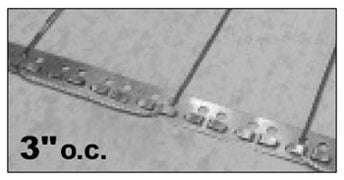
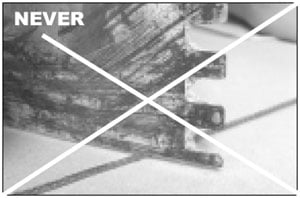
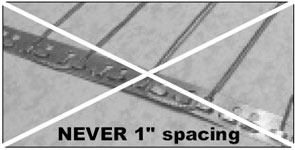
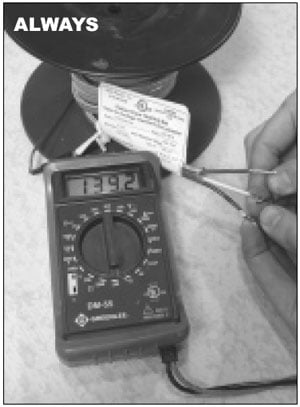
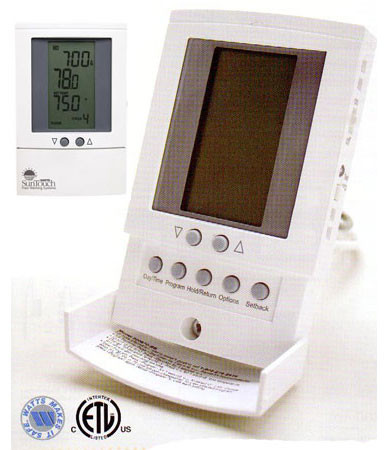
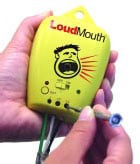
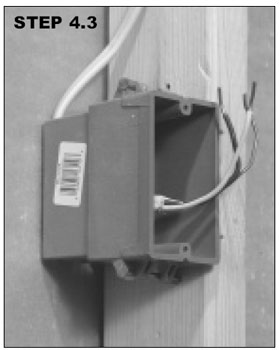
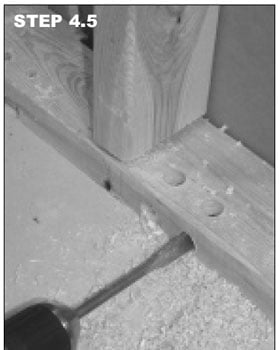
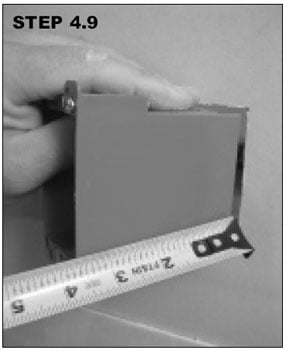
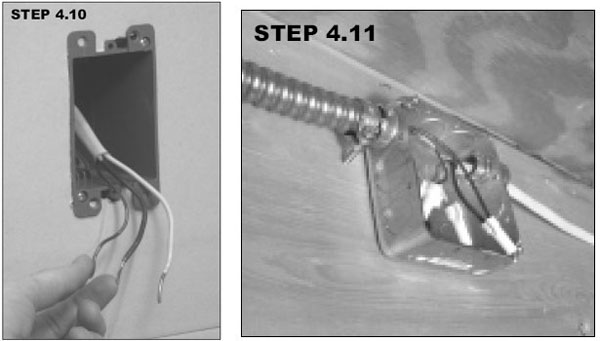
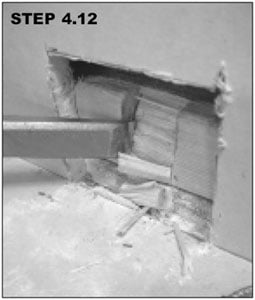
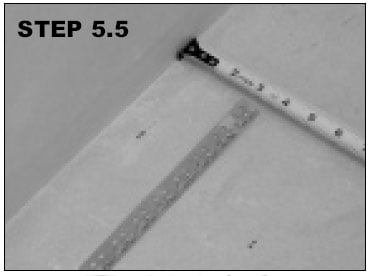
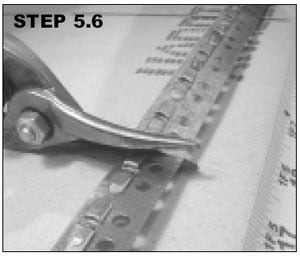
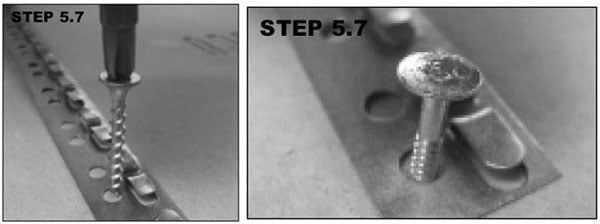
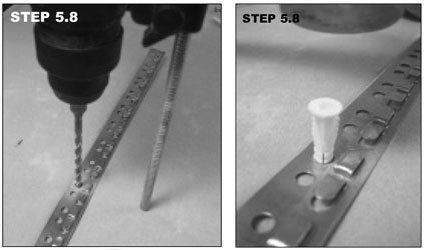
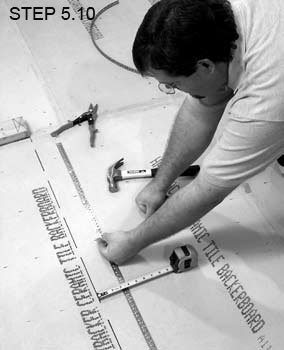
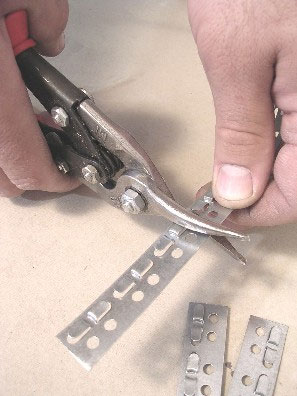
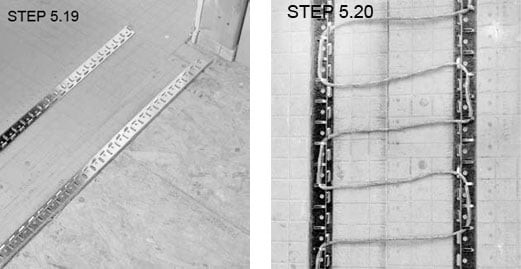
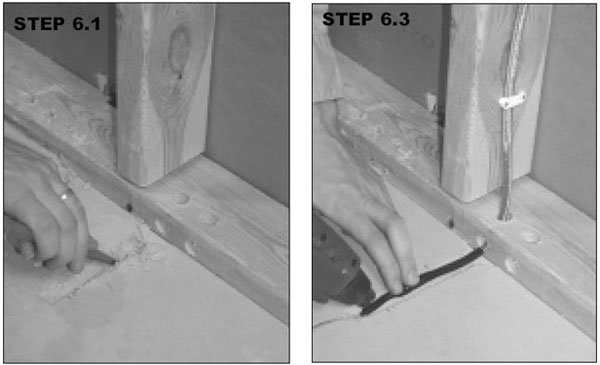
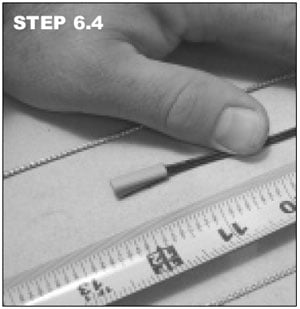
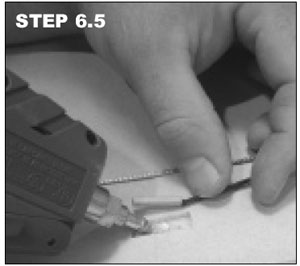
In reply to Bud Gonzalez.
Sensor are connected to the thermostat its sense the heat under the tile and send the information to the thermostat
How is the sensor checked, to determine if it is working correctly.
In reply to Miranda.
No it is not too small
What constitutes a small closet? Instructions say to not locate the thermostat in a small, confined area. I was planning to install the SunStat Pro in a 3×3 (8′ ceiling) closet. Is that too small?
I’m just done looking at your article and I rather enjoyed it. I had some questions in the beginning of the article though, but I held on reading and I’m delighted I did. Good interesting article, webmaster! Keep publishing and I’ll certainly be back again soon. Thanks and take care.
It’s really a great and useful piece of info. I’m glad that you simply shared this useful information with us. Please keep us informed like this. Thanks for sharing.